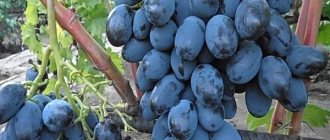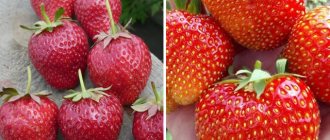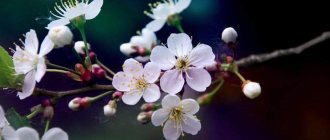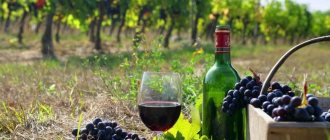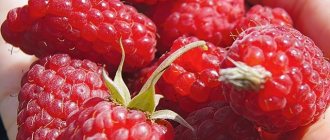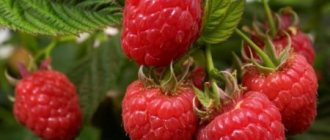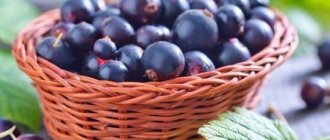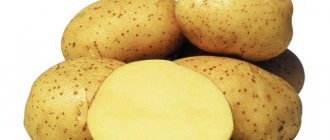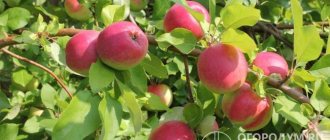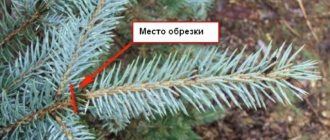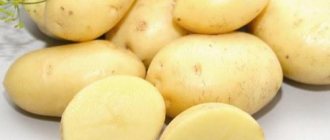Home / Garden / Berries
Back
Published: 03/18/2020
Reading time: 6 min
0
Strawberry “diamond” - what else could you call the fragrant sweet diamonds on garden strawberry bushes! The originators of the variety, Californian breeders, with obvious pride gave such a bright name to the sweet brainchild. A photo of the fruit in winter makes Victoria lovers nostalgic for summer and a desire to study the description of the variety to find out whether Diamant strawberries can settle in their summer cottage.
- 1 Introduction to the variety
- 2 Agricultural technology 2.1 Planting
- 2.2 Care and feeding
- 2.3 Shelter for the winter
Description of the variety
Strawberry Diamond was bred by Californian scientists at the end of the last century. The variety can be grown in open ground and under film. Diamond looks impressive in the kitchen or on the balcony, planted in a flower pot and hung in a decorative flowerpot.
Bushes
The bushes grow spreading and tall. Diamond requires a lot of space in the garden. The leaves are impressive in their size, with powerful flower stalks protruding above them. Simultaneously with the active phase of fruit set, the plant produces mustaches.
Berries
Diamond's fruits are cone-shaped and have a beautiful round shape. The skin is bright red, dense and shiny, at the stage of technical maturity with an orange tint. The aroma is strong and rich. The weight of the berries varies from 20 g to 32 g, depending on care and climatic conditions. Ripe Diamant fruits are dense, which allows the crop to be stored and transported for a long time. Some summer residents consider high density as a disadvantage, saying that strawberries can be chewed like an apple.
Diamant strawberries are of little use for canning, as they are low in juiciness and have light flesh.
Productivity
During the season, strawberries of the Diamant variety can produce 1 kg. and more from a bush of large beautiful berries. Fruiting begins in the first month of summer and continues until the first frost.
Features and characteristics of berry crops
The main feature of the Diamant strawberry variety is the remontant nature of the plant, due to which the crop can bear fruit throughout the year, but only if the necessary maintenance environment and proper care are observed.
Despite the fact that the variety is remontant, with constant fruiting the berries do not begin to become smaller, but remain consistently medium in size. In addition, one can note the high productivity of the plant. Under good conditions, one bush can bear up to 2 kilograms of fruit.
Bush size
The Diamant strawberry bush grows easily and can reach a length of 30-50 centimeters. For this reason, the plant is often used as a decorative decoration, hanging it in a flower pot.
Appearance of the sheet plate
Diamond leaves are large in size, have a dark green matte color and small wrinkles on the surface. The edges of the leaves have characteristic teeth.
Flowering and pollination
With the right level of warmth, the variety can begin flowering in early spring and last throughout the year if the conditions meet the needs of the plant. Since the variety has bisexual flowers, it can pollinate on its own without the need for other crops in the garden.
Ripening time and yield
Full ripening of the fruit occurs approximately 3-4 weeks from the moment the fruit is formed. The yield of the Diamant variety is high and, subject to the conditions necessary for the plant, can reach 2 kilograms per bush per season. Since the plant is remontant, such a harvest can last for several months in a row, until the onset of frost. The average berry size is approximately 30 grams, but can reach 40-50 grams.
Taste qualities of the fruit and its further sale
Tasters rate the taste qualities of Diamant strawberries at 4.7 points out of 5 possible. The berries have a sweet taste with a slight sourness, which manifests itself in the aftertaste. The fruit has a persistent strawberry aroma and a dense pulp structure. One of the disadvantages is the insufficient juiciness of the berries. Subsequently, the fruits are used in the preparation of confectionery and other dishes, baked goods, liqueurs, natural juices, and eaten raw.
Due to the fact that the berry pulp is dense, the fruit is easy to transport over long distances, in which it does not wrinkle or get damaged. For the same reason, berries are stored for a long time.
Resistance to frost and dry weather
This variety has average resistance to frost and can withstand temperatures of at least -20 °C without special shelter. However, when frost sets in, it is recommended to mulch or cover the plants so that they are not exposed to cold temperatures and do not start to get sick. Diamant strawberry does not tolerate drought and in excessive heat or dry climate it begins to get sick, dry out and may die. The optimal temperature regime for this variety is within 20 °C, provided that the plant is systematically moistened.
a brief description of
Due to the excellent characteristics of the variety, farmers are willing to grow Diamond.
Advantages of the variety
- high resistance to diseases and viruses, especially Verticillium wilt and root rot;
- large beautiful fruits;
- excellent shelf life and transportability;
- high tasting qualities.
Disadvantages of the variety
- fruits are low-juiced and light inside;
- the bushes are spreading and take up a lot of space on the site;
- does not tolerate the dry season well;
- increased demands on soil fertility;
- strong dependence of yield on cultivation conditions;
- The berries are very dense and crunchy on the teeth.
The described disadvantages are inherent in many remontant varieties, among which Diamant is distinguished by its large fruit and pronounced sugar content.
Landing
Planting a plantation of Diamant strawberries can be done in spring and autumn. In the second case, careful sheltering of young seedlings from winter cold will be required, but the harvest can be obtained the following season. In regions where winters are unstable and frosty, it is better to plant in early spring, and in the first season, cut off all flower stalks so that the bushes become stronger and form as many rosettes as possible. Spring and autumn are the optimal time for planting purchased seedlings, because... There are a lot of them during these periods and the weather contributes to their rooting. If you increase the number of your own plantings with your own planting material, then the optimal time is the beginning of August. The seedlings will have time to develop before winter and will bear fruit next year.
The plots for Diamant strawberries are chosen to be sunny and spacious. The yield of the variety and the quality of the fruit are directly dependent on the composition of the soil. The best option is loam or sandstone with a pH of 5.0-6.5.
Preparation of the bed begins 2 weeks before planting the seedlings. They dig up the area, carefully select all the roots, and add rotted cow or horse manure at the rate of 10 kg. per sq. meter. Heavy soil is diluted with coarse sand.
The ridges are oriented from north to south. The area should not be excessively damp. Lowlands with high groundwater levels and hills where the water immediately drains away are not suitable for garden strawberries.
The most easy-to-maintain ribbon planting scheme:
- 25-30 cm between plants;
- at least 70 cm between tapes.
High yields can also be obtained using the square-nest method:
- three bushes are planted in a triangle at a distance of 10 cm;
- 0.5 m is left between nests.
After planting, the seedlings are watered and mulched.
Good predecessors of Diamond are legumes, carrots, beets, oats, dill, and garlic. You should not plant strawberries after nightshades and cucumbers.
Advantages and disadvantages of strawberries “Malvina”
Experts highlight the following benefits of Malvina strawberries:
wonderful taste of berries due to the high sugar content; the ability to transport crops over long distances, as it tolerates transportation well. excellent appearance of the berries, which is important if you plan to sell the crop; In addition, when stored in a cool room, Malvina strawberries retain their presentation for several days; late fruiting. This allows you to extend the period of collecting, preparing and consuming fresh berries, that is, extending the berry season. Disadvantages of the variety:
Disadvantages of the variety:
- the bushes need to be planted at a considerable distance from each other, which is not entirely convenient in small garden plots;
- the yield of the variety is 10-20% lower than the standard indicators. Although this disadvantage is compensated by the excellent taste of the fruit.
Did you know? On three Malvina bushes out of a hundred, small leaves form directly on the berries. This is a genetic defect.
Growing and care
The Diamant variety is demanding on soil fertility and quality of irrigation.
Watering
Watering strawberries is especially important during the flowering period and the beginning of berry ripening. The frequency of watering is once every 5 days.
Drip irrigation is preferred. In case of heavy precipitation, strawberries do not need additional watering. Diamond does not tolerate heat and drought well, so in the southern regions it requires shading.
Loosening, weed control
There should be no weeds on the beds. The absence of weeds is a guarantee of productivity and absence of diseases. Mulching has a good effect. Sawdust, peat, pine needles or straw will prevent moisture evaporation during dry summers and eliminate the need for weeding.
Removing a mustache
During the period of active fruiting, the plant produces a large number of whiskers. If you do not plan to propagate the variety, they must be pruned regularly.
Top dressing
The Diamant variety responds well to foliar feeding on the leaves. The best organic fertilizers are cow and horse manure, bird droppings, and nettle infusion.
Fresh bird droppings must be diluted in water 1:10 and left for 7-10 days to ferment. Before applying to the beds, the solution is diluted again 1:15. Such powerful feeding requires no more than 1 liter. on the bush.
Pest and disease control
The Diamant variety has increased immunity to powdery mildew, leaf spot, verticillium wilt and root rot. But this does not mean that strawberries do not require disease prevention.
Before the flowering phase begins, the bushes should be treated with copper oxychloride. The drugs “Intavir”, “Switch”, “Tiovit-Jet” have a good effect. Against slugs, use “Slimax” at a rate of 5-7 kg/ha, “Metaldehyde”, which will require 8-10 kg. for 1 hectare.
To repel pests, marigolds, onions, garlic, fennel, and other spicy crops are placed around strawberry plantings.
Preparing for winter
Strawberries can successfully overwinter only under snow cover, but it is better to use non-woven materials. It is advantageous to choose places for planting where cold air will not stagnate and snow will not be blown out.
In autumn, after the last harvest, dry foliage is cut off. Sick bushes are discarded. Exposed roots must be covered with soil. A layer of straw is poured on top. Spruce branches protect well from frost.
It is necessary to ensure that the row spacing is also not left without cover. Protecting row spacing will help prevent freezing of the root system.
Disease and pest control
Concluding the review of the description of the Diamant strawberry variety, we must dwell on the problem of diseases and pests. More often, strawberries are destroyed by leaf beetle, strawberry mite or nematode. Pests and pathogens can spread with purchased seedlings. Before planting, seedlings are doused with hot water. Onions or garlic are good for repelling pests from strawberries. Marigolds can be planted next to the garden bed.
Gray rot is very dangerous for remontant strawberries. The disease is more often observed in beds with dense planting of bushes. Weeds are also a spreader of rot. The strawberry bed should be clean and well ventilated. A free passage is created between the bushes. In spring, darkened and frozen leaves are removed. Preventive treatment with fungicides helps well against gray rot.
The video talks about garden strawberries:
Reproduction
Diamond strawberries are propagated in several ways:
- The most effective is with rosettes on the mustache. Rosettes are cut off from the mother plant when the root system has formed and at least 2 full leaves have grown.
- When it is not possible to purchase high-quality planting material, you can get by with seeds. The seed material is pre-soaked for 3-4 days. This is done at the end of February in a heated room. Sowing is carried out in boxes with loose nutrient soil, which is covered with film to create a humid microclimate. With the appearance of 2–3 leaves, the seedlings are planted in a prepared greenhouse. It is necessary to carefully monitor humidity and ventilate plants on hot days. Over the spring and summer, the seedlings will grow and become stronger. In the fall they can be planted in a permanent place.
- 3-4 year old plants can be propagated by dividing the bush into 2-4 parts. This is a less effective method, since if division is unsuccessful, the plant will be sick for a long time and the yield will decrease.
“Diamond” bears fruit well in one place for 3 years, then replanting is required.
Reviews
I was disappointed in Diamante and removed the variety from the site. The berries are of mediocre taste, hard, not particularly sweet. The bushes do not tolerate heat well and the yield is low. Diamond was inferior to my second variety, Queen Elizabeth, in all respects.
The Diamant variety is chosen by gardeners who want to have large-fruited strawberries on their plot, which can be harvested throughout the summer season until frost.
If you follow all agrotechnical recommendations, you can get a rich harvest of delicious berries with a pronounced strawberry aroma.
Remontant strawberry variety Queen Elizabeth 2
A remontant variety with large berries, weighing 40-50 grams on average, some specimens reach a weight of 125 grams. Juicy berries with medium softness. To prevent the berries from becoming smaller, you need to update the variety every year.
The strawberry variety Queen Elizabeth 2 is resistant to pests and diseases, and is also winter-hardy. A very popular variety with sweet berries that ripen at the end of May. Fruits until October.
The variety is cultivated on hills and in vertical gardening. It bears fruit in the first year of planting, even the berries ripen on the rosettes. The fruits tolerate transportation well, the berries are consumed fresh, used for freezing and canning.
Video - Remontant strawberry variety Queen Elizabeth 2
Remontant strawberry variety Temptation
An early ripening hybrid with a nutmeg berry flavor. Large fruits weighing an average of 30 grams will delight you from May until autumn frosts. Berries with dense pulp, not very juicy. A remontant variety with long peduncles, which attracts the attention of lovers of decorative floriculture.
